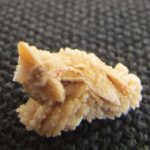
Both younger age and more recent exposure to some antibiotics were associated with greater risks for kidney stones.
Use of certain antibiotics may be contributing to the rise of kidney stones among children and adults, new study findings suggest.
Of 12 classes of oral antibiotics, 5 were associated with increased odds of nephrolithiasis, Gregory Edward Tasian, MD, MSCE, of the Children’s Hospital of Philadelphia and colleagues reported in the Journal of the American Society of Nephrology. The odds of nephrolithiasis increased by 2.33 times with the use of sulfas, 1.88 with cephalosporins, 1.70 times with nitrofurantoin/methenamine, 1.67 times with fluoroquinolones, and 1.27 times with broad-spectrum penicillins. Exposure to any of the 5 antibiotic classes within 3 to 12 months was associated with greater risks.
Children and adolescents appeared particularly susceptible. In exploratory analyses, antibiotic exposures at a younger age or within 3 to 6 months strongly related with nephrolithiasis. This relationship remained statistically significant for 3 to 5 years for all 5 antibiotic classes except for broad-spectrum penicillins.
“Our findings support the hypothesis that antibiotics may be contributing to the increasing prevalence and earlier age at onset of nephrolithiasis,” Dr Tasian and his collaborators stated. “Given that children receive more antibiotics than any other age group, and 30% of antibiotics prescribed during ambulatory care visits are inappropriate, these findings provide another reason to reduce inappropriate outpatient antibiotic use.”
As for a possible explanation for the association between antibiotic use and stone risk, antibiotic-induced changes in the gut microbiome might affect macronutrient metabolism and lead to kidney stones. However, the authors could not rule out direct antibiotic crystallization in the kidney. The short period between antibiotic use and nephrolithiasis also might be explained by temporary, antibiotic-induced changes in the urinary environment leading to stone formation in susceptible individuals. The investigators adjusted models for the rate of health care encounters, comorbidities, urinary tract infections, and use of medications including thiazide and loop diuretics, proton-pump inhibitors, and statins.
In the case-control study, the team matched 25,981 nephrolithiasis patients to 259,797 controls by age, sex, and date of diagnosis using electronic health records from the Health Improvement Network. This database included information from more than 13 million children and adults from 641 general practices in the United Kingdom during 1994 to 2015.
References
Tasian GE, Jemielita T, Goldfarb DS, et al. Oral antibiotic exposure and kidney stone disease. J Am Soc Nephrol 2018;29. doi: 10.1681/ASN.2017111213.
Oral antibiotics may raise risk of kidney stones. Children’s Hospital of Philadelphia; May 10, 2018. [news release]





